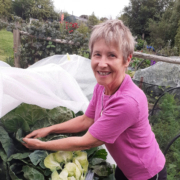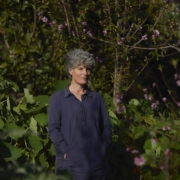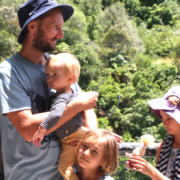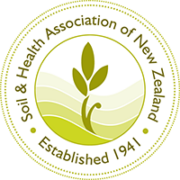The history of GE in New Zealand
Bonnie Flaws investigates New Zealand’s ongoing debate on the regulation of genetic modification
We hope you enjoy this free article from OrganicNZ. Join us for access to exclusive members-only content.
The question of whether we should allow genetic engineering in New Zealand has been raging for almost as long as the technology has been around – since the 1970s. By the late 1990s and early 2000s, the sentiment among the public was decidedly anti-GMO, with protest a regular feature of the political landscape, including famous hīkoi that travelled from Northland to Wellington. Now the topic is in the headlines again after the Productivity Commission recommended in its 2021 report that New Zealand’s strict laws regulating genetic engineering ought to be reviewed, in part because the techniques used have evolved.
GM, GMO, GE, GEd – what exactly does it all mean?
- New Zealand law defines a genetically modified organism (GMO) as any organism in which any of the genes or other genetic material have been modified by, inherited or otherwise derived through any number of replications, by in vitro techniques.
- Genetic engineering (GE) is the use of in vitro techniques to make genetically modified organisms.
- Genetic modification (GM) is used interchangeably with the term genetic engineering by experts in the field.
- Transgenic techniques, what we traditionally think of as genetic engineering, use a foreign “gene of interest” that has been cultured and inserted into a cell of the host organism. Today, it’s more common to hear about gene editing (GEd) techniques, such as CRISPR-Cas9, TALENs and ZFNs.
- Gene editing (GEd) techniques have been around since the late 70s, but some tools (nucleases) like CRISPRCas9, TALENs and ZFNs are new.
The use of language in the GM debate
The language used to describe genetic engineering has often been contested by those who would like to see it deregulated. For example, it’s been argued that conventional and selective breeding of plants is a form of genetic engineering. More recently, it has been argued that the biochemical processes of gene editing are similar to those that cause natural mutations.
Jack Heinemann, a professor at the School of Biological Sciences at the University of Canterbury, who promotes regulation, says the “equivalence to nature” argument is a semantic obfuscation, but a High Court ruling in 2014 made it unambiguous. New Zealand became the first country to make it explicit in law that gene editing is a technique of genetic modification, meaning it must be regulated. Heinemann was the expert witness in this case. This ruling hinged on the ability of the technique to make changes at scale that wouldn’t happen in nature, he says.

Reader support keeps us going
Please support our work by joining with a membership subscription (print or digital). Organic NZ is independently published by the Soil & Health Association, a charity devoted to healthy soil, healthy food and healthy people.
Our independent journalism relies on support from people like you!
A potted history
This tension between those for and against regulation has been a continuous thread in the national discourse, with the public generally wanting controls, and industry and parts of academia wanting more freedom to experiment.
After a field trial moratorium was lifted in 1987, the public became increasingly agitated about GE experimentation, particularly around the issue of contamination of agricultural crops, and demand for tighter regulation grew. The first big breakthrough for activists came with the 1996 Hazardous Substances and New Organisms (HSNO) Act, leading to the creation of the Environmental Risk Management Authority (ERMA). This was the body responsible for overseeing importation, development, field trials and releases of GMOs. The act allowed scientists to experiment with GM techniques in the lab and in contained field trials.
But GE experiments began to cross lines that many people found distasteful and unethical. The worry that GMOs might escape from the lab and contaminate and self-propagate in the environment, or that food with foreign genes inserted might end up on their plate kept activists like Zelka Grammer motivated.
“You have this whole nefarious history of incompetence and slackness, and then even worse, MAF and MPI not adequately monitoring to catch significant breaches of ERMA’s rules of approval,” says the chair of GE-free Tai Tokerau. “People like Stefan Browning from the Green party and local orchardists had to go and find secret field trial locations, take photographic evidence, march down to MAF and MPI and say, ‘WTF! Why are these brassicas flowering out of doors when it’s not allowed under the conditions of approval?’ It was shut down in disgrace over and over and over.”
There was a strong feeling that regulators were not adequately monitoring trials, and the rapid development of the biotech industry was seen as a threat to New Zealand’s agricultural sector. Despite this, industry and academic voices were keen to see the technology liberated for use in both the biomedical and agricultural spheres. Without deregulation, New Zealand would be left behind in the technological and economic race.
Organisations such as the Royal Society Te Apārangi, Plant & Food Research, Scion, NZBio, Malaghan Institute of Medical Research, Agcarm (New Zealand Association for Animal Health and Crop Protection) and Federated Farmers have all advocated for greater deregulation of genetic engineering over the years.
A petition signed by 92,000 Kiwis called for a Royal Commission to investigate and establish a way forward for the controversial technology. This was done, and in 2000 the Royal Commission on Genetic Modification validated many of the concerns voices by activists. The overall recommendation was to “proceed with caution”, while also rejecting the unrestricted use of genetic engineering. Within a year, a voluntary moratorium was put in place – all in all a landmark year for people power.
Several memorable hīkoi in 2001 and 2003 followed the Commission’s findings. Māori played a big part in their organisation but the movement was broad-based and many New Zealanders took part. Groups like GE-Free New Zealand and Mothers Against Genetic Engineering (MAdGE) had a prominent public voice. In 2015 the Northland and Hastings regions were successful in asserting their own “GE free” status in their district plans.
It is clear that everyone is in it for the money. The risks can be dismissed by appealing to the benefits, and when the benefits are not forthcoming, the promises have to be kept alive. Biotechnology is the south sea bubble at the end of the millennium.
A quote from “The Biotechnology Bubble”, an article by Mae-Wan Ho, Hartmut Meyer and Joe Cummins, originally published in The Ecologist and reprinted in the July 1999 issue of Organic NZ.
However in 2012, CRISPR, a new gene editing tool, had been discovered. Proponents argued it was more precise than transgenics, and led to changes similar to what might happen naturally. Proponents said the technology should be set free to fulfil its potential. It could be applied not only in food production, but also in medical research, pest control and even to tackle climate change.
At the same time, a growing body of scientific literature showed that gene editing gave rise to numerous unintended genetic mutations, and was not as precise as claimed. The Sustainability Council of New Zealand took the Environmental Protection Authority (formerly ERMA) to court to challenge industry claims that gene editing was not genetic engineering.
The 2014 High Court ruling, which determined gene editing was legally a form of genetic modification, also established that the rate and specificity of change was what made the technology risky.
Key dates in the history of GE
| 1973 | First recombinant bacteria is developed in the US. |
| 1978 | The New Zealand government places a moratorium on field releases that remains in place for 10 years. |
| 1980s | The early 1980s sees GE technologies begin to be applied in laboratories in New Zealand, largely for biological and medical research purposes. |
| 1988 | The moratorium on field release is lifted and an Interim Assessment Group (IAG) is established for the field testing and release of genetically modified organisms. |
| 1996 | Hazardous Substances and New Organisms Act 1996 passes in law, which leads to the establishment of the Environmental Risk Management Authority New Zealand (ERMA). |
| 1999 | The Independent Biotechnology Advisory Committee is established to assess and provide independent advice on the use of GE technology. |
| 2000 | The Royal Commission on Genetic Modification is established and a voluntary moratorium put in place. |
| 2008 | Activists chop down GE pine trees at a Scion forestry research site near Rotorua in 2008 and 2012. |
| 2011 | ERMA becomes the Environmental Protection Authority (EPA). |
| 2012 | CRISPR is invented, adding a new tool to the GE toolbox. |
| 2014 | The High Court rules that gene editing is a form of genetic modification. |
| 2015 | Both the Hastings and Northland regions become GE free. |
| 2016 | Auckland becomes GE free. |
| 2021 | Productivity Commission report recommends a full review of HSNO. |
The Māori world view

Māori have largely been vocal opponents of GE from the beginning. “The issue is that using GE will have an impact on the mauri of our food and the soil,” says Lahni Wharerau, kaiwhakahaere of Te Waka Kai Ora, the National Māori Organics Authority. “Mauri is what gives us life force and underpins wellbeing. GE interferes with that.”
Wider news reporting since the Productivity Commission’s report shows that attitudes aren’t set in stone. Maui Hudson, associate professor at the University of Waikato, said a national survey of Māori on the issue of genetic modification and gene editing was done last year, showing a wide variety of perspectives were held. “For some people it’s all the same, whether it’s genetic modification or gene editing, while for others they get that there is a difference and that may change the way you think about it.” However, a “proceed with caution” approach was still valued. “In the context of the conversations we’ve had, there is no appetite for a totally unregulated environment for gene editing.”
The Productivity Commission and the global push for GE deregulation
The New Zealand Productivity Commission last year called for a complete review of HSNO, as well as the legislative framework and institutional arrangements governing genetic engineering, suggesting separate legislation or a standalone regulator.
“Technologies have moved on significantly over the last 20 years. In particular, advances in gene editing have produced technologies such as CRISPR, which enable much faster and more precise modification than earlier tools,” it says in its 2021 report.
Once again, proponents have seized the opportunity to promote deregulation. Jack Heinemann says the push for deregulation is happening globally. Pulling no punches,
he calls it an orchestrated campaign by vested interests – industry and those parts of academia aligned with industry outcomes – that follows the same pattern everywhere, drowning out voices of scientific doubt.
As a geneticist, he is immensely positive about the benefit to society of regulated genetic engineering in the lab, but says both the utopian promise of genetic engineering – how it’s promoted to the public and the regulators – and the risk profile remain unchanged since regulations were put in place. What gene editing does is change the scale and speed at which interventions can be made in nature, he says. “That is precisely what makes a technology risky.”
President of GE-Free New Zealand Claire Bleakley says the HSNO regulations follow a clear pathway to ensure products are safe. “Because GMOs are living organisms they might contaminate the indigenous flora and fauna, the economic crops, or have serious health effects. Our biggest concern is that the Productivity Commission report was basically minimising the dangers of GMOs and highlighting the simplicity of them.”
Sociologist Jodie Bruning agrees the report obfuscates risk, and doesn’t represent what the bulk of submissions had been asking for – just two out of 80 submissions (both from the medical industry) that fed into the Productivity Commission’s 2021 report argued that HSNO should be opened up.
The main fear Jack Heinemann, Claire Bleakley and Jodie Bruning convey is that without the appropriate checks and balances, and careful scientific oversight, niche experimentation with the ability to change organisms at pace and scale would proliferate, and with them, unintended consequences.
“Regulation is not a ban. It isn’t stopping anything. Good science is like good democracy – it needs accountability and transparency. No dark corners,” Bruning says.







